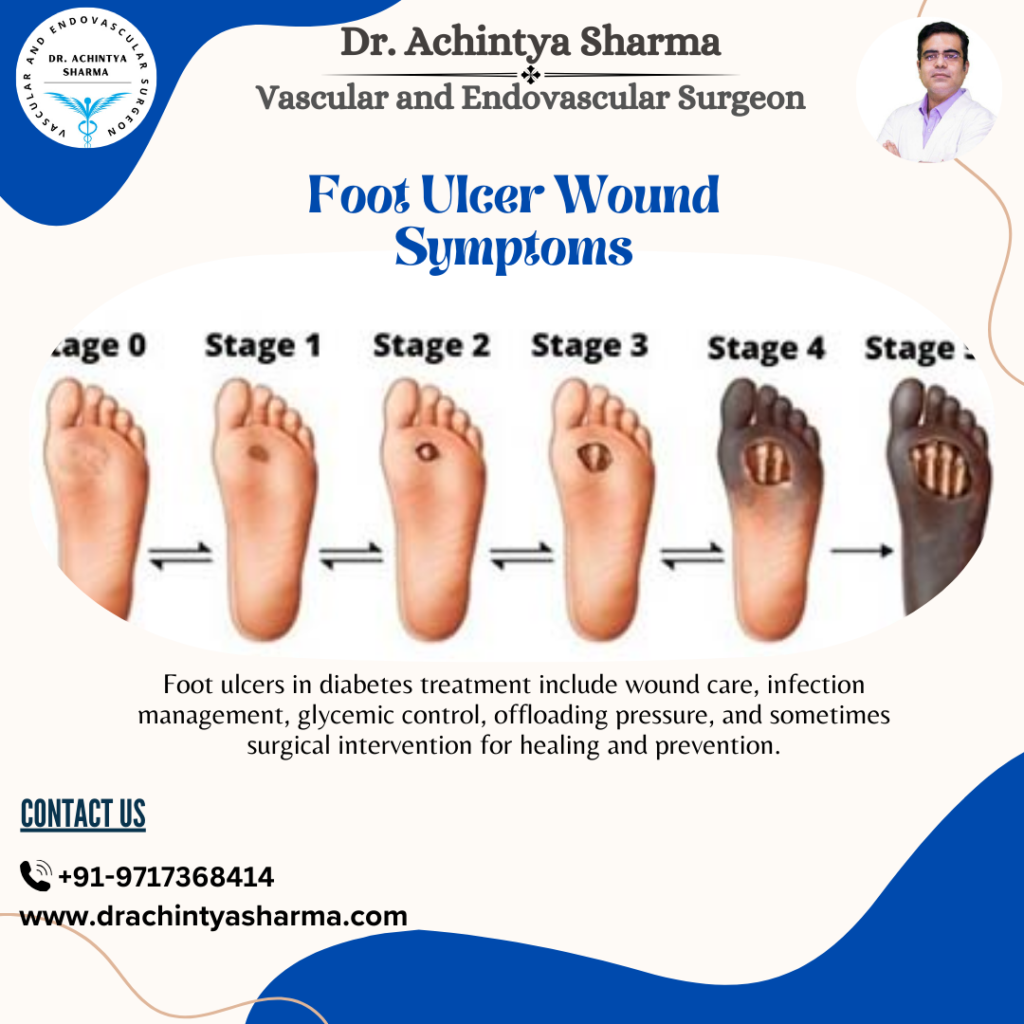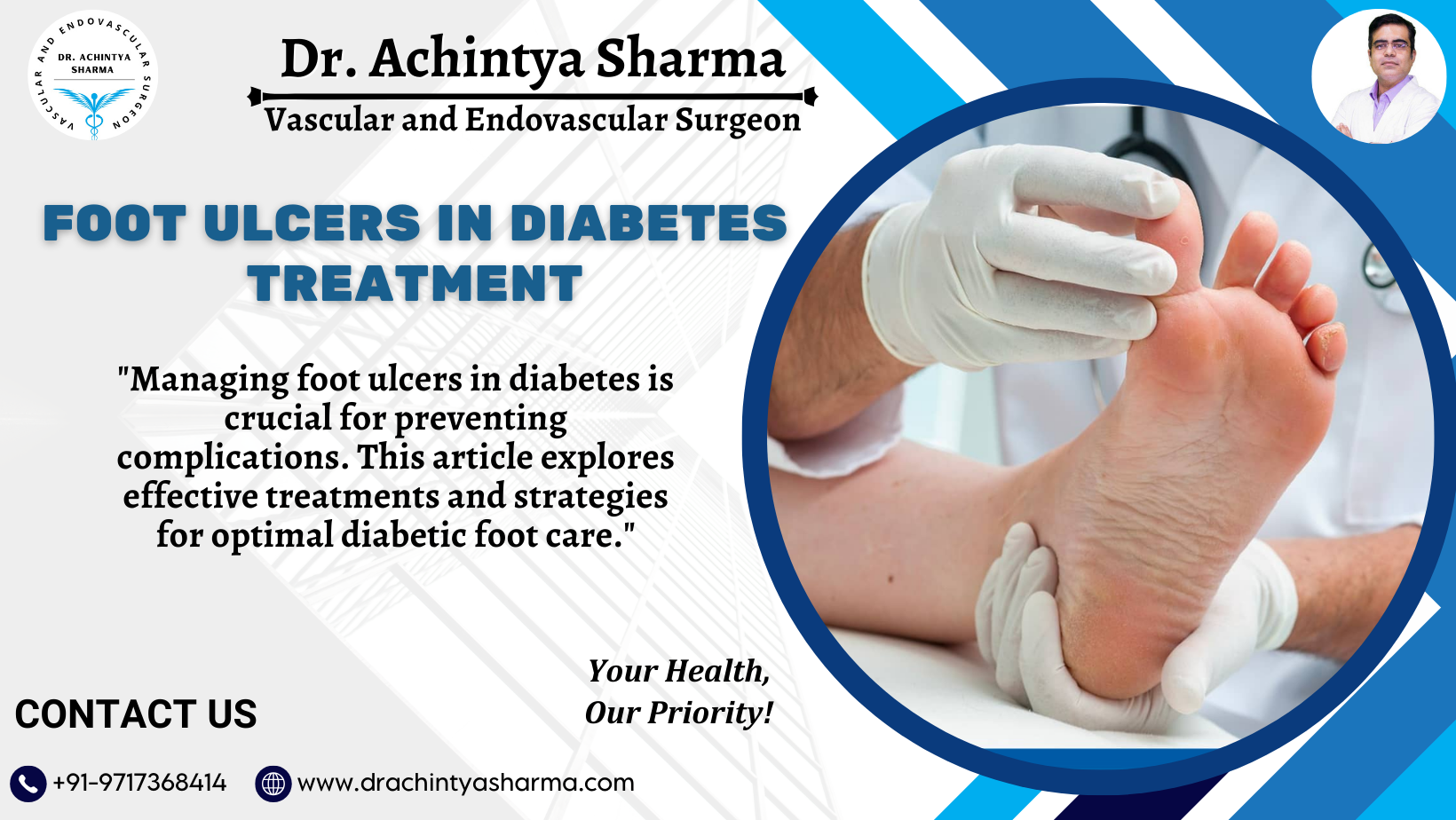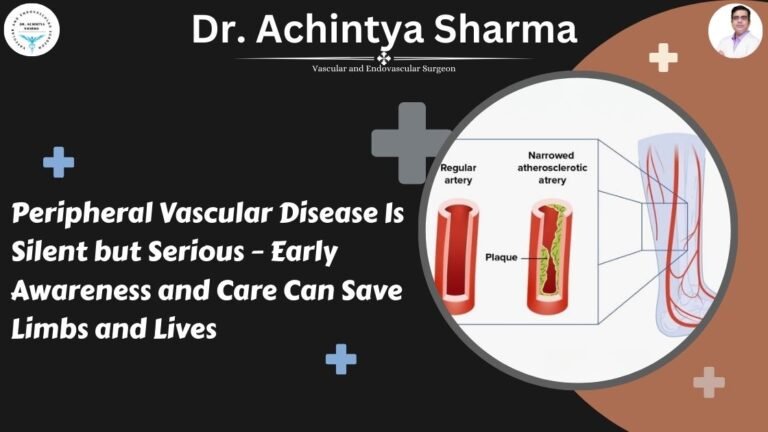Foot ulcers are a common and disabling complication in diabetes that makes it difficult to treat them. These sores arise from several causes, including peripheral neuropathy, PAD, and poor wound healing typical of diabetes. A multidisciplinary approach involving podiatrists, endocrinologists, vascular surgeons as well as wound care specialists is necessary for the management of diabetic foot ulcers. Traditional treatment approaches comprise offloading, debridement, infection control as well as appropriate dressing. Nevertheless, technological advancements in medicine have led new therapeutic options such as growth factors, bioengineered skin substitutes, and hyperbaric oxygen therapy that promise improved treatment outcomes. Besides this patient education is equally important in curbing the epidemic of ulceration by emphasizing foot hygiene and prevention measures. These advancements, foot ulcers in diabetes treatment remain significant healthcare, underscoring the need for ongoing research and collaborative efforts to enhance treatment efficacy and ultimately improve the quality of life for individuals living.
Understanding the Effect of Foot Ulcers in Diabetes Management
- The Occurrence of Foot Ulcers in People with Diabetes
Diabetic people often have problems with their feet; foot ulcers affect around 15% of the patients. If these open sores on one’s foot are not effectively treated, one can contract severe infections leading to amputation.
- Current Problems in Healing Foot Ulcers
Slow healing is one of the main difficulties experienced in foot ulcers in Diabetes Treatment that are usually exacerbated by factors like inadequate blood flow and damaged nerves. Timely and efficient interventions are mandatory to avoid any further harm.
Advancement in Wound Care Technology for Diabetic Foot Ulcers

- Development of Innovative Dressings
The Latest wound care technology has resulted in the development of innovative dressings that heal and shield the wound from infection thereby recovering fast.
- Growth of Bioengineered Skin Substitutes
These substitutes are encouraging as an option for the treatment of diabetic foot ulcers because they provide a framework on which new tissues can be developed. They have the potential to speed up the healing process and improve outcomes in patients with non-healing wounds.
- Utilization of Advanced Therapies such as Growth Factors
The application of growth factors is one type of advanced therapy that has shown promise, due to its ability to stimulate wound healing. These growth factors can help encourage cell growth and angiogenesis. This eventually results in improved vascularization and tissue regeneration seen in foot ulcers.
Telemedicine and Remote Monitoring of Diabetic Foot Ulcers
- Remote Wound Monitoring Systems
The use of telemedicine technologies enables healthcare providers to monitor the healing progress of diabetic foot ulcers from a distance; this allows the medical specialists to track the wounds closely and intervene immediately in case of any complication. This constant checking can help prevent problems.
- Virtual Consultations with Healthcare Providers
Patients with diabetes can have virtual consultations with their healthcare providers on issues concerning the management of wound care. These visits through Virtual Care, such as LiveHealth Online can assist in reducing geographical disparities in accessing specialized care, especially among those residing far away from urbanized areas.
- The Importance of Regular Follow-ups for Wound Care
Regular follow-up visits play a crucial role when it comes to monitoring the healing process of diabetic foot ulcers as well as adjusting treatment plans as is necessary. Through telemedicine options, patients can stay connected with their doctors for continued support regarding wound care.
Lifestyle Changes and Preventive Measures for Foot Ulcers in Diabetes Treatment
- The Importance of Proper Foot Care Routine
Proper foot care routine maintenance is very important for people with diabetes to avoid wounds on the feet. This includes examination every day, keeping them clean and dry, wearing suitable shoes, and cutting the nails carefully to prevent injuries.
- Weight Management and Diet Modifications
Weight management and good nutrition can aid in monitoring blood sugar levels thus reducing complications such as foot ulcers. Medical professionals who lay out a healthy eating plan lower the risk prevalence of diabetes in the future.
- Regular Exercise and Blood Sugar Monitoring
Engaging in physical activity often while still keeping track of one’s blood sugar are key aspects of managing someone’s diabetic condition. By participating in regular exercises, there could be an improvement in nerve function, and circulation to minimize chances of getting ulcers from poor blood flow.
Summary
In conclusion, the future of healing foot ulcers in diabetes treatment lies in a combination of advanced in wound care technologies, telemedicine interventions, proactive lifestyle changes, and collaborative healthcare approaches. By understanding the impact of foot ulcers, embracing innovative treatments, promoting preventive measures, and fostering patient-provider partnerships, we can improve outcomes and quality of life for individuals living with diabetes.




